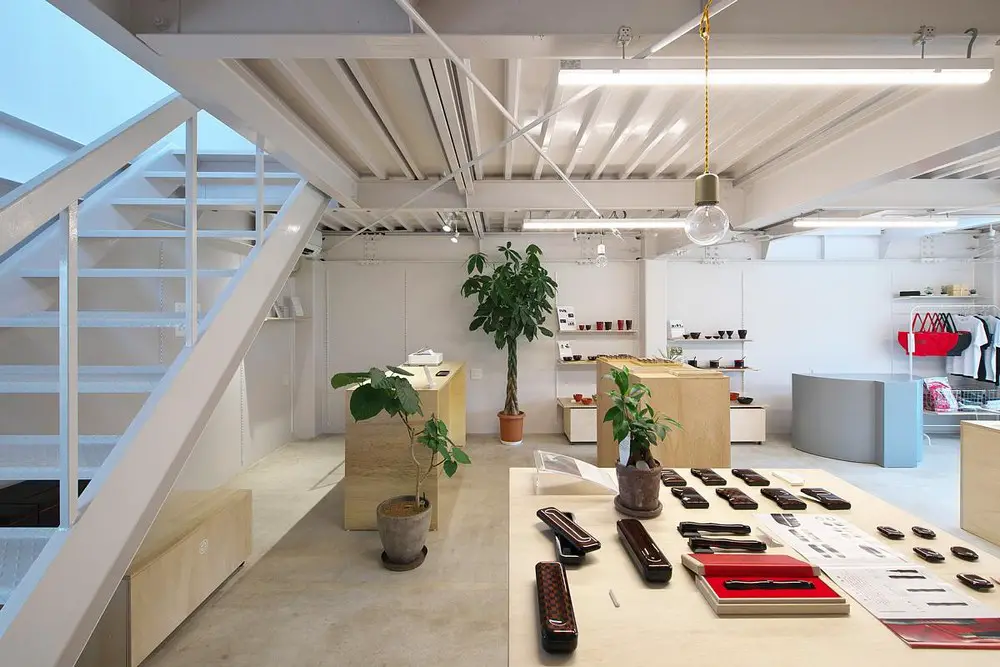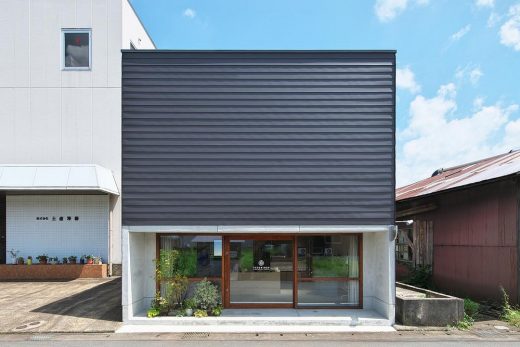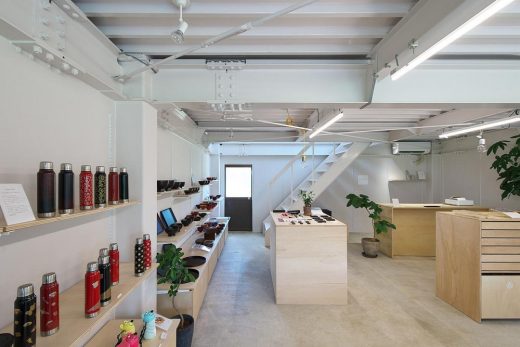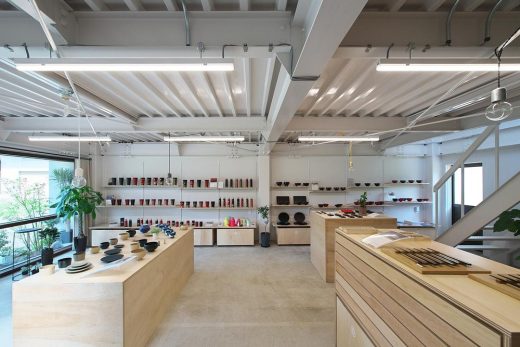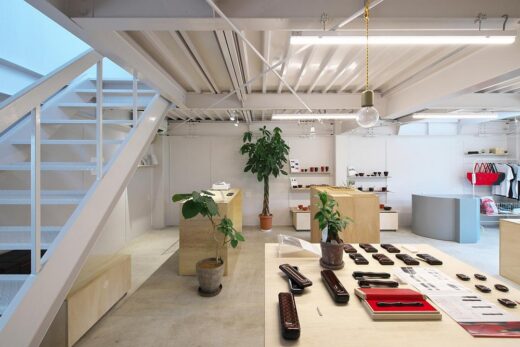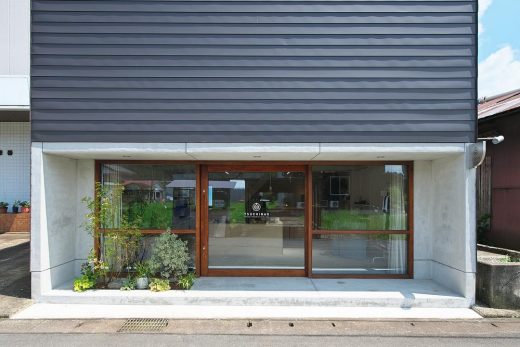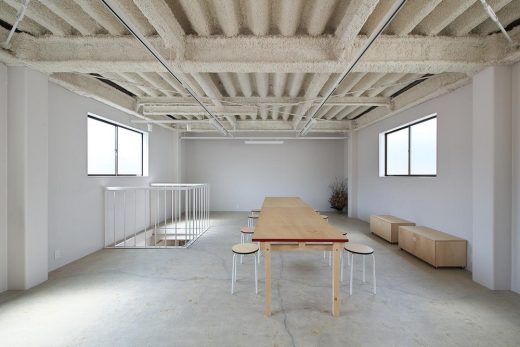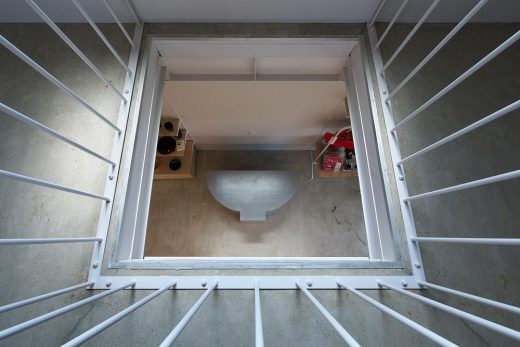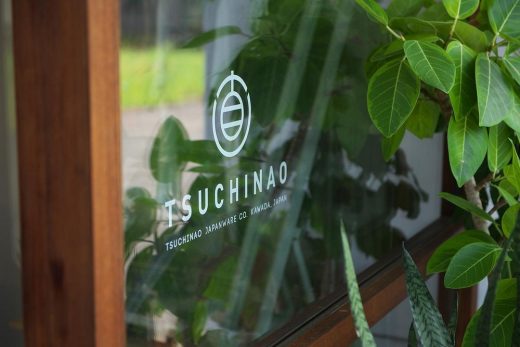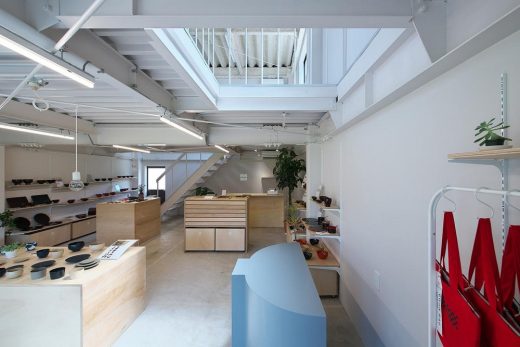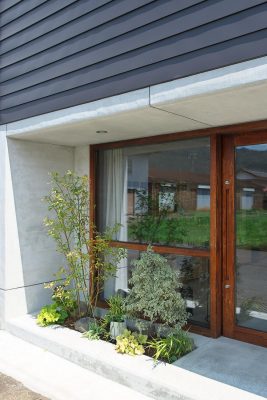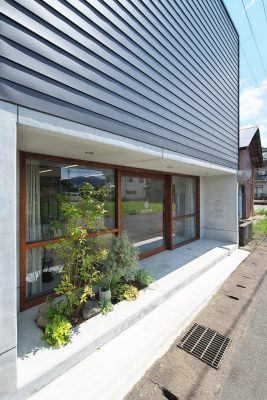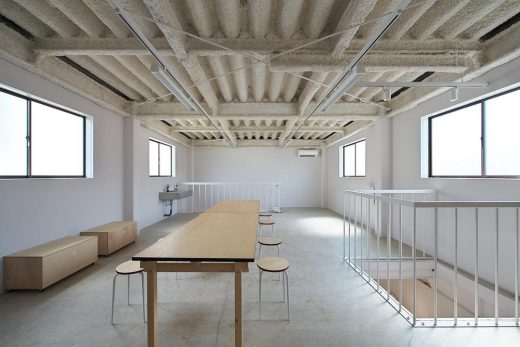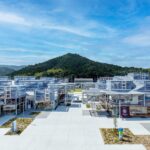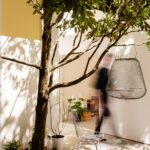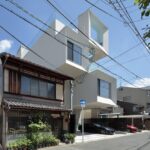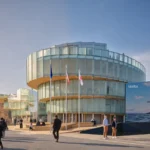Tsuchinao Shikki, Fukui building, Japanese studio and retail development, Japan architecture photos
Tsuchinao Shikki in Fukui, Japan Building
24 Apr 2023
Architects: Baum
Location: Fukui, Japan
Photos by Naoki Myo
Tsuchinao Shikki, Japan
An old warehouse has been renovated into a directly managed store of a company Tsuchinao Shikki that produces and sells Echizen lacquerware.
Echizen lacquerware is a traditional craft made by coating lacquer over mainly in Fukui, the old name “Echizen”, Japan. They are known for their beautiful and elegant deep colors which soothe the hearts of the Japanese people, and are popular as items used for celebratory occasions like weddings, coming-of-age days, etc.
It was a big challenge to renovate the inorganic and impersonal building of a warehouse into a store selling Japanese crafts. Before the renovation, the building gave an overall heavy impression and the proportions of the vertical and horizontal lines were not balanced. However, the shutter of entrance had been removed and the ceiling height of the eave was made as high as possible to give a sharp appearance. In order to apply the traditional techniques of Echizen lacquerware to the architecture itself too, the wooden frame of the façade which makes the first impression of the building is finished in lacquer by the craftsmen of the company.
The interior seeks a balance between tradition and modernity, concerning that the products of the company are unique in their traditional yet modern design that fit today’s dining table. Furthermore, to highlight the red and black that are the main colors of their lacquerwares, the aim was to create a simple space with minimum ornamentations.
The white-based interior has another important role in making the space appear larger. While considering the original low celling of the warehouse as an advantage to create a cozy and intimate atmosphere, the interior of the store was completed without being cramped. Despite the exposed massive structure, the color-coordinated interior is bright and open.
As for lighting, in addition to plain fluorescent lights and socket-only pendant lights, the large openings and partial atrium allow for natural light which was not able to caught in the original warehouse.
Lacquerware is made by a division of labor through the hands of various experienced craftsmen. The warmth of the many people involved in the creation of the store was also one of the concepts of this architecture, and the display furniture used to place the products was hand made by the architects, store staff, and student volunteers from the community. By using mainly accessible materials available at home improvement stores, not only were renovation costs kept to a minimum, but a familiarity that can only by conveyed by handmade products was also created.
The lacquerware store has second floor connected by the steal staircase. The floor is dedicated to workshop “TSUCHINAO Lab.” where visitors can try their hands at lacquering and painting on wooden plates, vessels, tumblers, and so on. The chairs and
desks here, as well as the wooden frames at the entrance, were lacquered by the craftsmen themselves.
Overcoming the limited budget and all the constraints caused by the structure and form of the original building, the team succeeded in greatly enhancing the potential of the space.
Continuous Plate House 2.0, Fukui – Building Information
Design: Baum – https://baum.jp/
Project size: 101 sqm
Completion date: 2020
Building levels: 2
Photography: Naoki Myo
Continuous Plate House 2.0 in Fukui, Japan images / information received 240423 from Architects Baum
Location: Fukui, Japan
New Japanese Architecture
Contemporary Japanese Architecture
Japanese Architecture Design – chronological list
Le 49 Residence, Mount Kamakura, Kanagawa, southeast Japan
Design: APOLLO Architects & Associates Co., Ltd
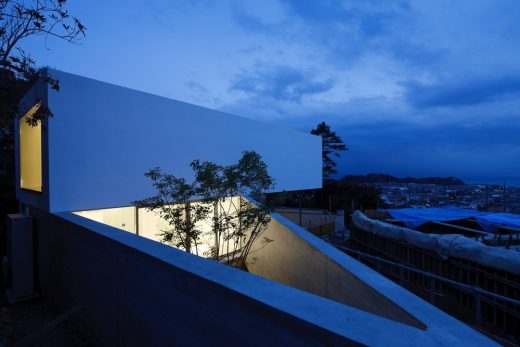
photography: Masao Nishikawa
Residence on Mount Kamakura in Kanagawa
Kanoko Building, Hushiki-ku, Kyoto
Architects: Eastern Design Office
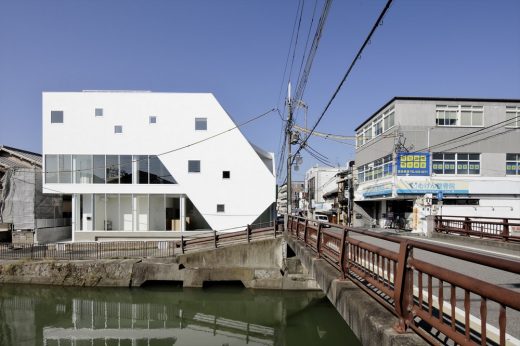
photographer : Koichi Torimura
Kanoko Building in Kyoto City
House in Muko
Design: Fujiwara Architects
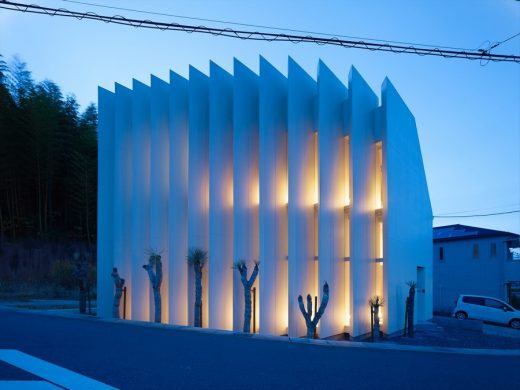
photo : Yano Toshiyuki
New Kyoto Residence
Comments / photos for Continuous Plate House 2.0 in Fukui, Japan designed by Baum page welcome

